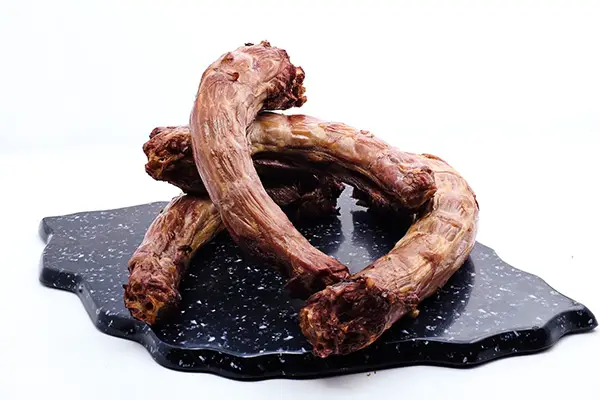Prepare yourself for an exquisite culinary journey as we delve into the intricacies of frying turkey necks, a Southern delicacy that tantalizes taste buds with its crispy exterior and juicy interior. Whether you’re a seasoned pro or a novice cook, this comprehensive guide will equip you with the knowledge and techniques to master the art of frying turkey necks to perfection.

Image: www.farmandfleet.com
Flavorful Versatility
Turkey necks are an incredibly versatile cut of meat, offering a range of culinary possibilities. They can be grilled, roasted, or fried, each method creating its own distinct flavor profile. When fried, turkey necks develop a crispy golden brown exterior that contrasts perfectly with their tender and flavorful interior. Season them with your favorite spices, and they can transform into a savory appetizer or a hearty main course.
Perfect Timing
The key to achieving perfectly fried turkey necks lies in finding the ideal frying time. This can vary based on the size and thickness of the necks, as well as the temperature of the oil. As a general rule of thumb, plan for a frying time of 10-15 minutes per pound of turkey necks. To ensure even cooking, turn the necks occasionally during frying.
To ensure optimal results, use a reliable meat thermometer. Insert the thermometer into the thickest part of the turkey neck, and when the internal temperature reaches 165°F (74°C), they are ready to be removed from the oil. This precise method guarantees that the turkey necks are cooked through while retaining their juicy tenderness.
When the frying is complete, drain the turkey necks on paper towels to remove excess oil. Let them rest for a few minutes to allow the juices to redistribute before enjoying them hot.
Expert Tips for Exceptional Flavor
Elevate your fried turkey necks to new heights with these tips from culinary experts:
- Season well: Don’t shy away from using bold spices and marinades to infuse your turkey necks with flavor. A blend of paprika, garlic powder, onion powder, black pepper, and cayenne pepper is a great starting point.
- Choose the right oil: Opt for a neutral-flavored oil with a high smoke point, such as canola oil or vegetable oil.
- Test the oil temperature: Before adding the turkey necks, drop a small piece of bread into the oil. If it sizzles immediately and rises to the surface, the oil is hot enough.
- Don’t overcrowd the pan: Frying too many turkey necks at once can lower the oil temperature and result in soggy necks. Cook them in batches instead.
- Keep the oil clean: As you fry the turkey necks, small bits of meat and breading may fall into the oil. Skim these particles to maintain clean oil and prevent burnt flavors.
By following these expert tips, you’ll create fried turkey necks that are not only crispy and flavorful but also safe to consume.

Image: www.thanhskitchen.com
FAQs: Answering Common Concerns
Q: How should I store leftover fried turkey necks?
A: Store fried turkey necks in an airtight container in the refrigerator for up to 3 days or in the freezer for up to 2 months. When reheating, warm them in a preheated oven or microwave until heated through.
Q: Can I fry frozen turkey necks?
A: Yes, you can fry frozen turkey necks. However, they will take longer to cook and may require adjusting the frying time to ensure even cooking.
Q: What are some tasty dipping sauces for fried turkey necks?
A: Dipping sauces like ranch dressing, honey mustard, barbecue sauce, or a combination of your favorites enhance the flavors of fried turkey necks.
How Long To Fry Turkey Necks
https://youtube.com/watch?v=mv-OsmDs7LU
Conclusion
Embarking on the culinary adventure of frying turkey necks unveils a realm of flavors and cooking techniques. With the guidance outlined in this comprehensive article, you’ll master the art of creating crispy, succulent, and incredibly flavorful turkey necks that will impress your family and friends alike.
So, if you’re eager to elevate your culinary repertoire, gather your ingredients and spices and embark on this delightful journey of frying turkey necks. And don’t forget to experiment with different seasonings and marinades to discover the flavor combinations that tantalize your taste buds the most.